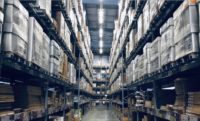Requests to ship hazardous and perishable goods across greater distances are increasing in frequency. With the surge of globalization, companies must contend with how to get fragile or potentially dangerous items to suppliers and end-users a world away.
Automation provides an answer. Companies can enjoy greater efficiency, transparency, safety and compliance while processing and distributing hazardous goods. Automation in the supply chain delivers an enviable return on investment.
1. Retrieval, labeling and handling
Human beings tire, require breaks and sometimes sustain injury. When something goes wrong in the handling of HAZMAT, the situation can quickly turn litigious. One of the primary benefits of adopting automation technologies is getting employees out of potential harm’s way.
The U.S. Federal Emergency Management Agency (FEMA) recognizes more types of potential harm in HAZMAT handling than most people are aware of. This includes thermal and radiological wounds, asphyxiation, chemical burns and etiological injuries.
Automation can remove human employees from HAZMAT storage areas and substantially reduce the likelihood of sustaining physical harm. In this context, automation might take the following forms:
- Order-picking and sortation robots
- Automated conveyor belts
- RFID or QR scanners for verification and labeling
- Automatic pallet handlers and lift trucks
Something as simple as automating the transport of outbound shipments of HAZMAT products across a warehouse work area could eliminate workplace hazards and injuries from mishandling.
2. Gathering and studying data
Lithium-ion batteries are so common now that it’s easy for consumers to forget they’re a recognized hazardous material under Department of Transportation (DOT) regulations.
Nevertheless, the demand for these batteries is likely to grow elevenfold between 2020 and 2030. That means supply chains dealing with them require temperature control and explosion-proof containers to ensure safe transit.
Batteries are far from the only hazardous and frequently shipped item in high demand. Medicines, cosmetics, foods, beverages and electronics not related to batteries can all become dangerous. It’s vital for optimal storage conditions to be met from beginning to end.
Automate the process of gathering end-to-end data using sensors and the Industrial Internet of Things (IIoT). Even geographical data and chains of custody are easier than ever to record thanks to embedded sensors and GPS trackers in material handling equipment or shipping cartons. The ability to see location and condition data can be a strong defense against spoiled and damaged products, recalls and reputational damage.
3. Documentation and compliance
The word “automation” inspires images of sprawling robotic factories and trucks driving themselves. In truth, there’s a host of applications that are less glamorous but equally consequential. The market for robotic process automation (RPA) products that replicate human tasks like data entry, invoicing, and document organization grew 63% in 2018 alone.
Your experience with safety standards or factory protocols probably reinforced the importance of compliance and documentation. If you need a refresher on what constitutes a hazardous material or the consequences of not staying in compliance, now’s the time. One shipping company faced a $100,000 fine under the Hazardous Materials Transportation Act (HMTA) for failing to disclose the presence of toxic chemicals.
Automation has become the tool of choice for shippers and logistics companies hoping to stay within compliance through bulletproof documentation. With the right kind of machine learning and data visualization dashboard, it’s become easier than ever to discover surface defects and anomalies, monitor for cyberthreats automatically, and perform analysis on critical business functions to seek further optimizations.
4. Drones
The word “hazardous” relates to volatile contents and contents that pose a hazard under certain conditions. This includes vaccines and pharmaceuticals, as well as grocery items like meat, dairy and poultry. The unprecedented demand for online availability of perishable groceries in 2020 inverted the business models of some companies. One transitioned from 95% commercial sales and 5% domestic sales to the other way around.
Some major logistics companies recently turned to automated drones to deliver health care products that rely on careful handling, specific conditions and speedy delivery. Using drones in last-mile delivery for products that could spoil and become hazardous in the back of a stalled UPS truck is also eco-friendly. Having them deliver pharmaceuticals cuts down on traffic congestion, emissions and fuel use.
Automation and the Future of Shipping HAZMAT
Entire industries are doing digital at once, including everything to do with shipping, logistics and HAZMAT handling. Automation is neither a passing trend nor an existential threat to human jobs – it’s a tool like any other.
It will help refine how hazardous materials are handled and reach their destination. Remember to start small with a single problem or pain point to solve. Not every organization needs to spend a fortune on robots – and sometimes, it’s the smaller tasks that benefit most from an automated helping hand.



